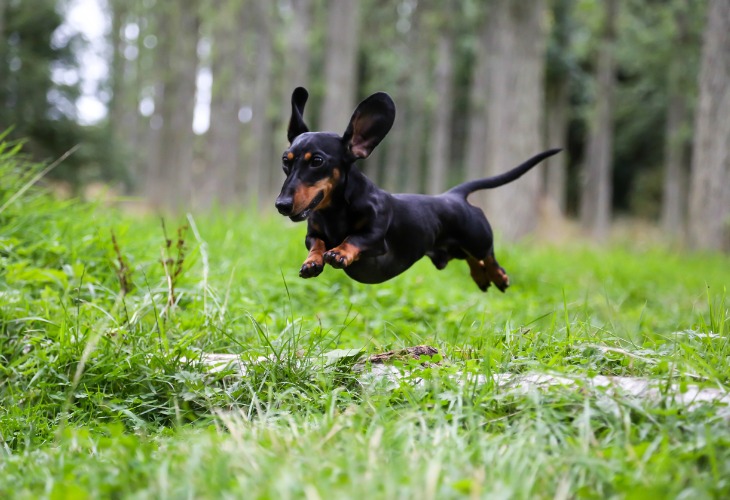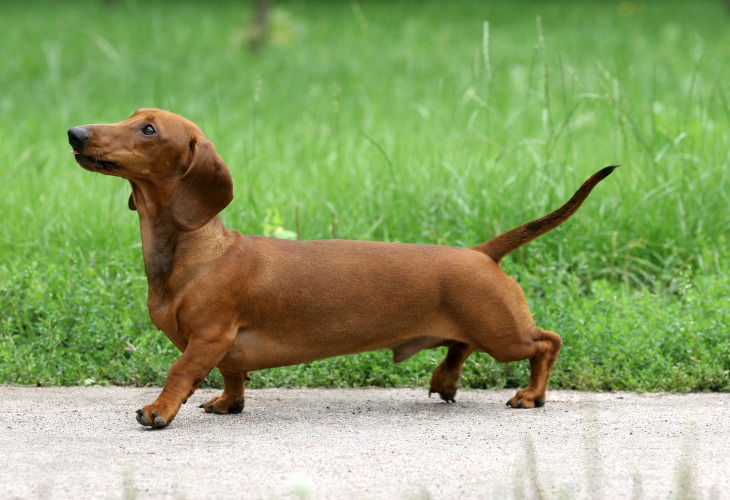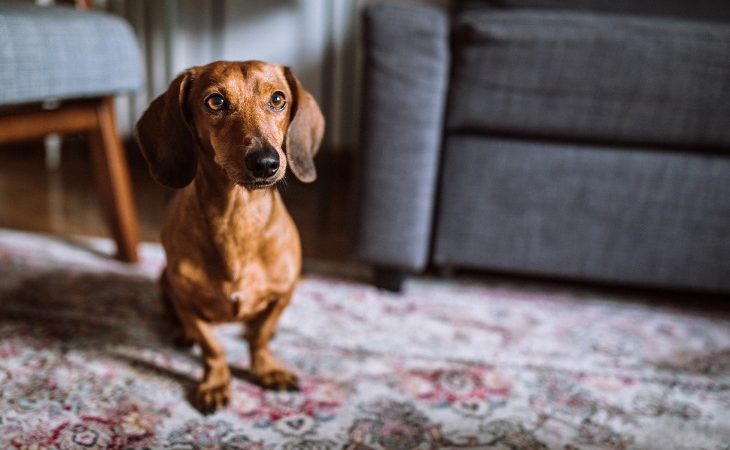Breed Standard: VDH, FCI I Size: Small I Average Lifespan: 12+ years I Personality: Affectionate, cuddly, and energetic I Coat: Short or long I Origin: Germany.
While the name Dachshund translates to “badger dog” in German, the breed is more commonly known as a “weiner dog” or “sausage dog” because of its unique body shape. They have long muscular bodies and could be either long-haired or short-haired. In the past, these small dogs were originally bred for hunting. Nowadays, the Dachshund is one of the most beautiful dog breeds. This dog breed is affectionate, super cuddly, and energetic.
The origins of the Dachshund
A true hunter
The origins of this adorable dog breed go back to the Middle Ages. Back then, the Dachshund was used for its impressive hunting skills. Hunters valued these dogs because of their small size and excellent sense of smell. They were particularly good at hunting small game, foxes, and badgers because they were able to dislodge them from their burrows thanks to their small size.
Towards the end of the 19th century, Dachshunds were bred in many parts the world, but especially in Germany. Dachshund breeding started in Bavaria, which is a German state located in the southeast of Germany. After, it was bred heavily in England because they were appreciated both as pets and hunting dogs. During this time, dog breed clubs dedicated to the Dachshund were created. For instance, in 1881, The Dachshund Club was created, followed by the Deutscher Teckelklub 1888 which was created in 1888 in Germany. A few years later, in 1891, the first Dachshund shows took place in Berlin and Amsterdam.

The personality of the Dachshund
While Dachshunds have strong personalities, they are also incredibly affectionate towards their family. Depending on how they are trained, this breed can show a great amount of independence. For this reason, this dog breed has a balanced personality.
Affectionate and possessive
The “weiner dog” is super friendly with its family. This is especially true of the long-haired Dachshund. It is gentle and always asking for cuddles and attention. The smooth-haired Dachshund, on the other hand, is known to be more independent. It is also known to be quite possessive.
In addition, this dog breed is a extremely intelligent, playful and lively. This dog is particularly dominant and always wants to be the leader. For this reason, this breed needs an owner that can give it firm training.
With that being said, this breed loves spending time with children, as long as they are shown respect. In addition, the Dachshund enjoys socializing with other animals such as cats and other dogs. More importantly, this dog does not like to be left alone.
While this dog barks a lot, it is not a very good guard dog. Its small size is not very intimidating.
Dynamic, lively, and passionate
This dog is very energetic. They love to play to let off steam and release their pent-up energy. Additionally, this breeds shows a lot of passion when playing. With its impressive sense of smell, the Dachshund really enjoys tracking.
However, once they’ve played enough, they enjoy resting. If you want a peaceful dog, the long-haired Dachshund is a good choice for you.
They adapt quickly to many different types of lifestyles. For example, they can live happily both in the city or in the countryside.
This breed’s intelligence often translates to mischief. When Dachshund owners are too permissive, Dachshunds take the opportunity to use this to their advantage.
Even though Dachshunds live with families as pets, we should not forget their past as hunting dogs. The wired-haired variety is particularly good at hunting. They are courageous and full of life.
With all that being said, this dog breed is not particularly fond of strangers. They prefer to save their affectionate side for their family. This is especially true of the smooth-haired Dachshund. In short, the Dachshund is possessive and only pays attention to its family.

The physical characteristics of the Dachshund
General
The “weiner dog” is known for its long body and short legs. It comes in three different sizes: the standard Dachshund, the miniature Dachshund and the kaninchen. “Kaninchen” means rabbit in German.
Head
This breed’s head looks quite graceful because it has a rather flat skull and light stop. Its nose is well-developed and it has a long and strong muzzle.
When it comes to their eyes, they are wide-set. They have friendly eyes that make them look joyful. The color of their eyes range from reddish-brown to brown-black.
The ears of the Dachshund are rounded and set high on their skull. They are also quite long, falling on the side of their heads and laying on their cheeks.
Body
This dog is muscular with a compact and vigorous physique. It has short legs and long body.
The neck of this breed is long, muscular, and slightly curved.

Coat, color, and grooming
Coat
There are three varieties: long-haired, smooth-haired, and wire-haired.
Colors
The breed can have a fawn or boar coat. Black and tan, black and tan harlequin, brown and tan, brindle and chocolate harlequin are also accepted.
Grooming
Grooming a Dachshund is quite easy, but should be done regularly, because this breed sheds all year round. With that being said, this dog does not need to be bathed. They should not be bathed more than three times a year. For long-haired Dachshunds, it’s important to detangle the coat regularly. If you adopt a wire-haired Dachshund, it’s recommended to take your dog to a professional dog groomer twice a year.
The Dachshund at a glance
Size: Depending on the variety of the Dachshund, it can measure from 11 to 25 cm (about 4 to 10 in).
Weight: 3 to 9 kg (around 6.5 to 20 lbs).
Health: This dog is not very prone to disease and is generally healthy. However, their spine can be weak, so it’s best to avoid climbing stairs or doing exercises that put too much strain on it.
Average lifespan: 12 to 14 years.
Is the Dachshund good with children? The Dachshund is a mischievous little dog who loves to play. They really enjoy spending time with children.
Is the Dachshund easy to train? This breed is stubborn and wants to be in charge. For this reason, it must be trained with firmness.

